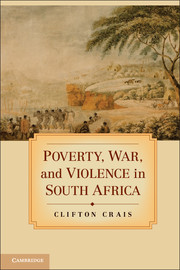2 - Maize and Markets
Published online by Cambridge University Press: 05 June 2012
Summary
The destructive nineteenth century stands singularly and remarkably within the millennium-old human history of agriculture in the Eastern Cape. Tens of thousands of people died. Conflict and conquest in the early colonial age produced a massive subsistence crisis that, in many areas, resulted in starvation and social crisis. A vast number of people found themselves displaced by war and then subjected to new colonial policies that dictated where they were to live; their new rulers also demanded taxes paid in cash. Violence had important implications not only for mortality rates– the destruction of bodies in war– but also affected how diseases spread, the size and composition of households, where people settled, how they moved, and, as we shall see, what kinds of crops they planted and how they interacted with the emerging market economy.
War made history. Violence, I suggest, became a motor of long-term structural change. Scholars interested in rural change in southern Africa, however, have not explored the economic implications of colonial violence; more generally, violence has been a topic historians have dared not explore in much detail. Bundy discussed the 1877–1878 war, offering details of the impact of the conflict on peasant communities. He was aware of the possibly transformative impact of war, in fact more so than many later writers on the African “peasantry.” However, because the work was based primarily on published primary sources, it was not easy to gather data closer to the level of the household, the central analytic category behind peasant studies. This meant it was difficult to reconstruct detailed local histories of agrarian change.
- Type
- Chapter
- Information
- Poverty, War, and Violence in South Africa , pp. 67 - 95Publisher: Cambridge University PressPrint publication year: 2011

